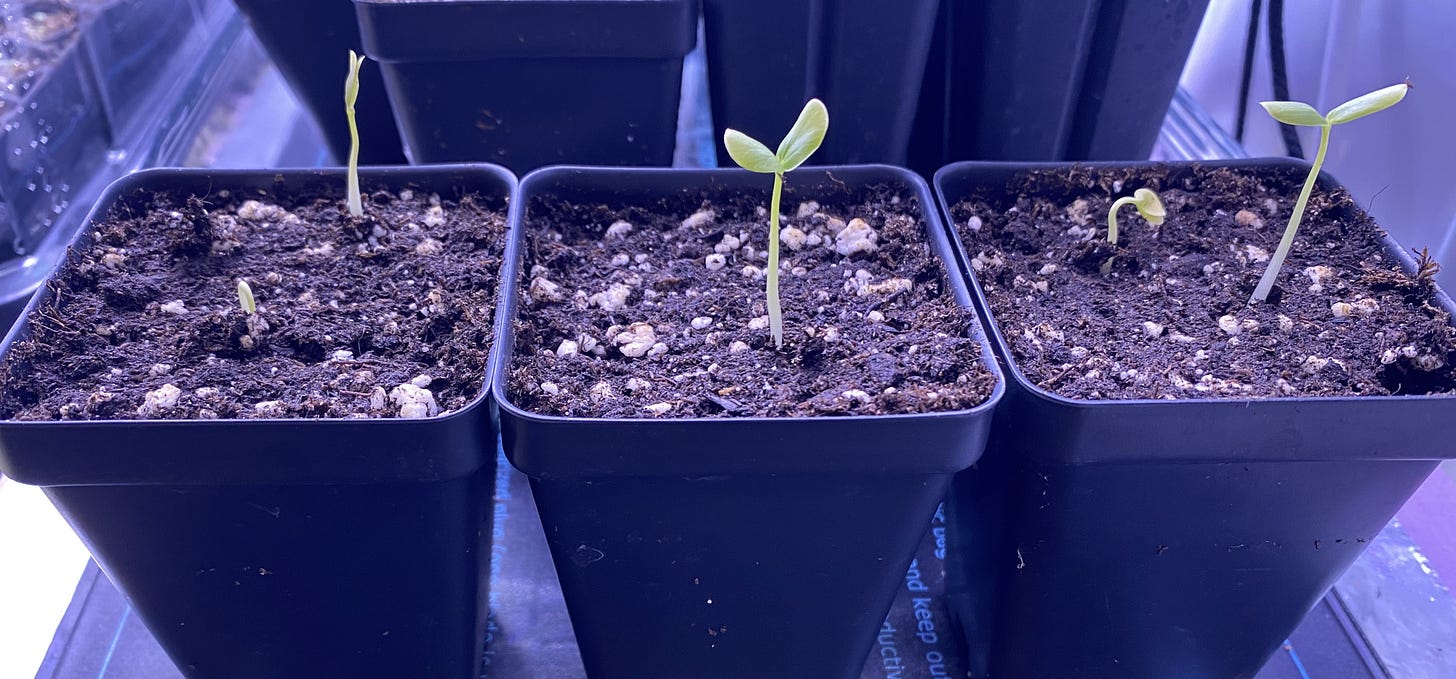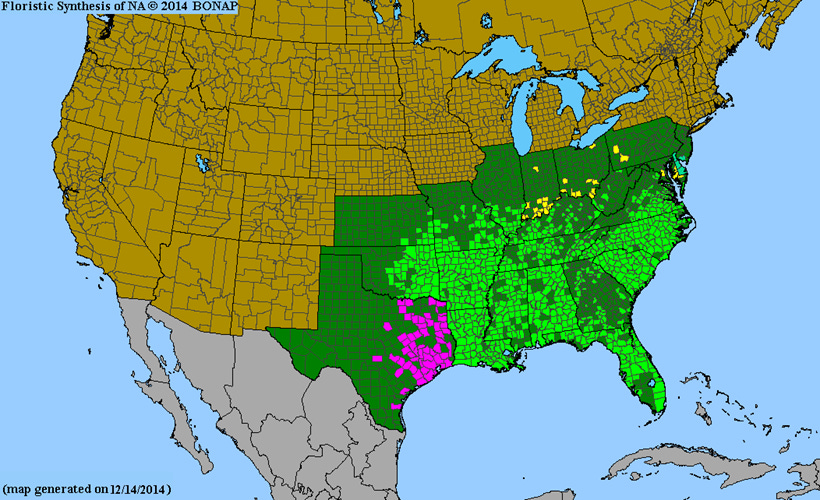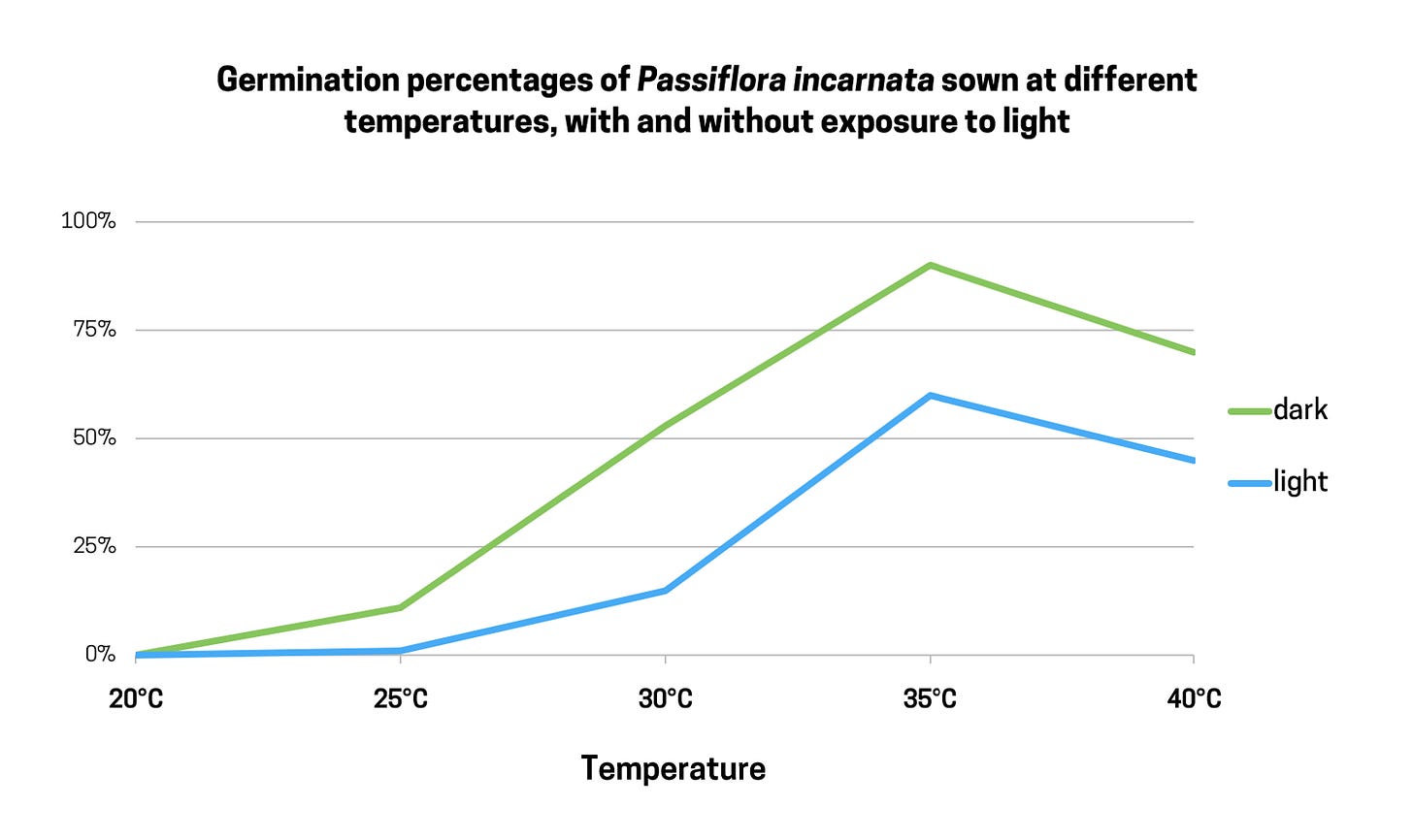Germinating Passiflora incarnata (Maypop, Passionflower) is Easy and Quick
Update (May 11, 2025): I’ve expanded and updated this guide on growing Passiflora incarnata from seed. To read the new, fully revised version on my personal website, use this link.
Contrary to what you may have read online, germinating Passiflora incarnata seeds is not difficult, nor does it take a long time. In fact, starting P. incarnata from seed is just like starting squashes or melons: just bury the seeds and give them heat. Within ten days, 70-90% of seeds will germinate. It’s that easy.

Maybe you’ve read that P. incarnata seeds need pretreatment to reliably germinate. In fact, two of my favorite seed companies – Prairie Moon and Truelove – suggest pretreating the seeds. Look, these are companies that I respect a lot, but not everyone is right about everything.
P. incarnata seeds are nondormant; they do not require any type of pretreatment to germinate. They do not need to be scarified (e.g., nicked with a blade, rubbed with sandpaper) because they have no physical dormancy. And they do not need to be stratified because they have no physiological or morphological dormancy.
Passiflora incarnata seeds require heat to germinate, and benefit from darkness
P. incarnata germinates best at about 35°C/95°F. These seeds love the heat, which makes sense, because they are native to the Southeastern United States (see figure 1), and they germinate during the summer. If you’ve tried and failed to grow P. incarnata from seed, you probably didn’t have the seeds hot enough. Benvenuti, Simonelli, and Macchia (2001) tested P. incarnata germination at various temperatures, and they found that 30°C/85°F was required to see germination over 50%, with 35°C/90°F producing the best results (see figure 2).
Exposure to light inhibits P. incarnata germination. Although P. incarnata will still germinate when exposed to light, germination will be lower. When testing P. incarnata at 35°C, Benvenuti, Simonelli, and Macchia (2001) reported 90% germination for seeds incubated in darkness, and 60% for those incubated with light. Under natural conditions, seeds experience darkness when they are buried relatively deeply (1/2 inch or so). While I can only speculate as to why they’ve developed this adaption, perhaps P. incarnata prefer germinating when buried deeply because, during the hot summers when it germinates, more moisture is retained deeper in the ground, which could positively affect seedling survival. At any rate, don’t surface sow these seeds; give them a nice 1/2 inch of potting medium.


So try sowing your P. incarnata hot and let me know how it goes! If you’re starting these seeds in a cold house in the wintertime, you may need to get creative in how you heat the seeds. But that’s a topic for another post!

